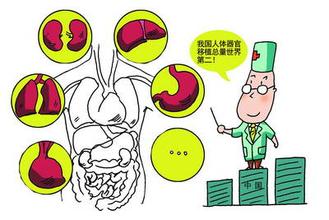
(图源:www.xmnn.cn/dzbk/xmrb)
器官移植是随着现代医学的发展逐渐出现的一种医疗手段,其旨在利用供体器官替换病人重要的受损器官来改善病人生存状态,延长病人寿命。随着近些年免疫学的发展,器官移植的成功率也在逐年上升。但是器官移植还存在一个主要的瓶颈,这个瓶颈就是免疫排斥反应。由于供体器官对于病人免疫系统来说属于异己组分,病人免疫系统会对供体器官产生免疫排斥反应,这是阻碍器官移植技术发展的最大问题。器官移植的免疫排斥反应主要包括对供体器官HLA的免疫排斥和自身抗原抗体反应排斥,对前者的抑制是器官移植短期存活的关键,对后者的抑制则关系到移植器官的长期存活。目前对器官移植免疫排斥中自身抗原抗体反应排斥形成机制的研究还比较少,而针对血管内皮细胞的自身抗体对移植器官脉管系统的损伤又是致使移植手术失败的重要原因之一。经典理论认为,自身抗体的产生与受体免疫系统通过识别HLA杀伤供体器官细胞释放细胞内含物有关,但近期部分研究表明,自身抗体的产生可能是独立于前者的过程,具体机制亟待解析。
12月17日,Sci Transl Med 刊发了蒙特利尔大学医院的研究者Marie-Josée Hébert等的新发现,Marie等人利用caspase-3激活状态的早期凋亡内皮细胞分离凋亡小体(apoptotic bodies)、外泌体样凋亡膜泡(apoptotic exosome-like vesicles)、小胞外膜泡(smaller extracellular vesicles),利用蛋白质组学分析方法对比三者的成分组成。他们发现早起凋亡细胞分泌的外泌体样凋亡膜泡(apoptotic exosome-like vesicles)中20S蛋白酶体活性对自身抗体的产生和免疫排斥反应具有促进作用。 后期的验证实验表明,仅有早凋时期内皮细胞分泌的外泌体样凋亡膜泡(apoptotic exosome-like vesicles)能够使幼鼠产生杀伤内皮细胞活性的自身抗体。在小鼠的MHC不相容异体移植模型中,外泌体样凋亡膜泡(apoptotic exosome-like vesicles)会促进杀伤内皮体细胞的自身抗体的分泌,并提高炎症反应。
这一新的发现,为预测和控制由自身抗体引起的器官移植免疫排至找到了新的途径,对提高器官移植手术成功率具有重要的指导意义,通过抑制手术中早期凋亡血管内皮细胞的20S 蛋白酶体活性可能对抑制移植排斥具有一定的辅助作用。
Sci Transl Med:Science旗下关注转化医学研究的子刊物。 IF:15.843
版权归外泌体资讯网所有,未经书面许可,禁止转载。联系邮箱exosomemed@163.com
Researchers identify apoptotic exosome-like vesicles as a central trigger for organ transplant rejection
Abstract:Autoantibodies to components of apoptotic cells, such as anti-perlecan antibodies, contribute to rejection in organ transplant recipients. However, mechanisms of immunization to apoptotic components remain largely uncharacterized.We used large-scale proteomics, with validation by electron microscopy and biochemical methods, to compare the protein profiles of apoptotic bodies and apoptotic exosome-like vesicles, smaller extracellular vesicles released by endothelial cells downstream of caspase-3 activation. We identified apoptotic exosome-like vesicles as a central trigger for production of anti-perlecan antibodies and acceleration of rejection. Unlike apoptotic bodies, apoptotic exosome-like vesicles triggered the production of anti-perlecan antibodies in naïve mice and enhanced anti-perlecan antibody production and allograft inflammation in mice transplanted with an MHC (major histocompatibility complex)–incompatible aortic graft. The 20S proteasome core was active within apoptotic exosome-like vesicles and controlled their immunogenic activity. Finally, we showed that proteasome activity in circulating exosome-like vesicles increased after vascular injury in mice. These findings open new avenues for predicting and controlling maladaptive humoral responses to apoptotic cell components that enhance the risk of rejection after transplantation.





